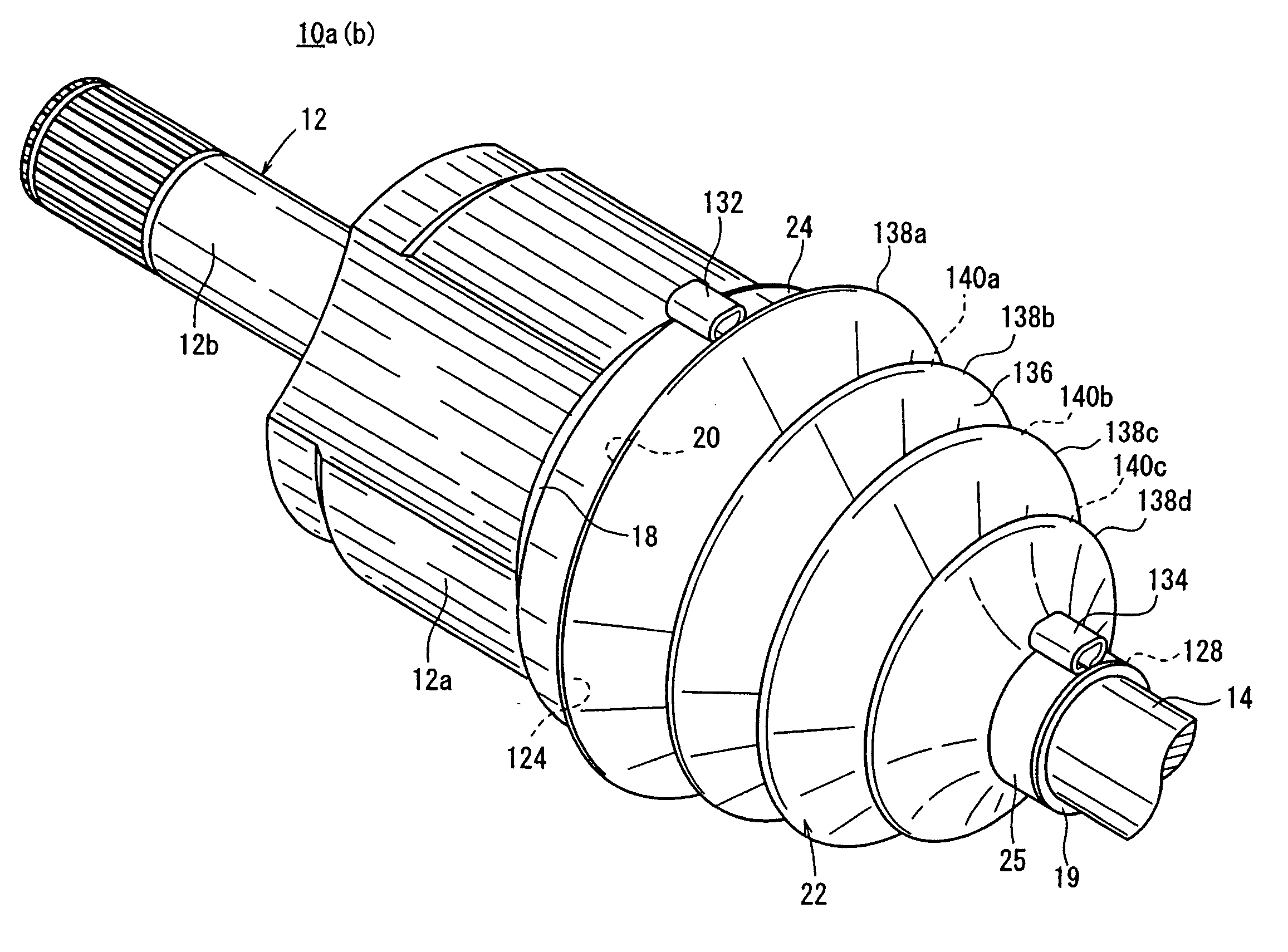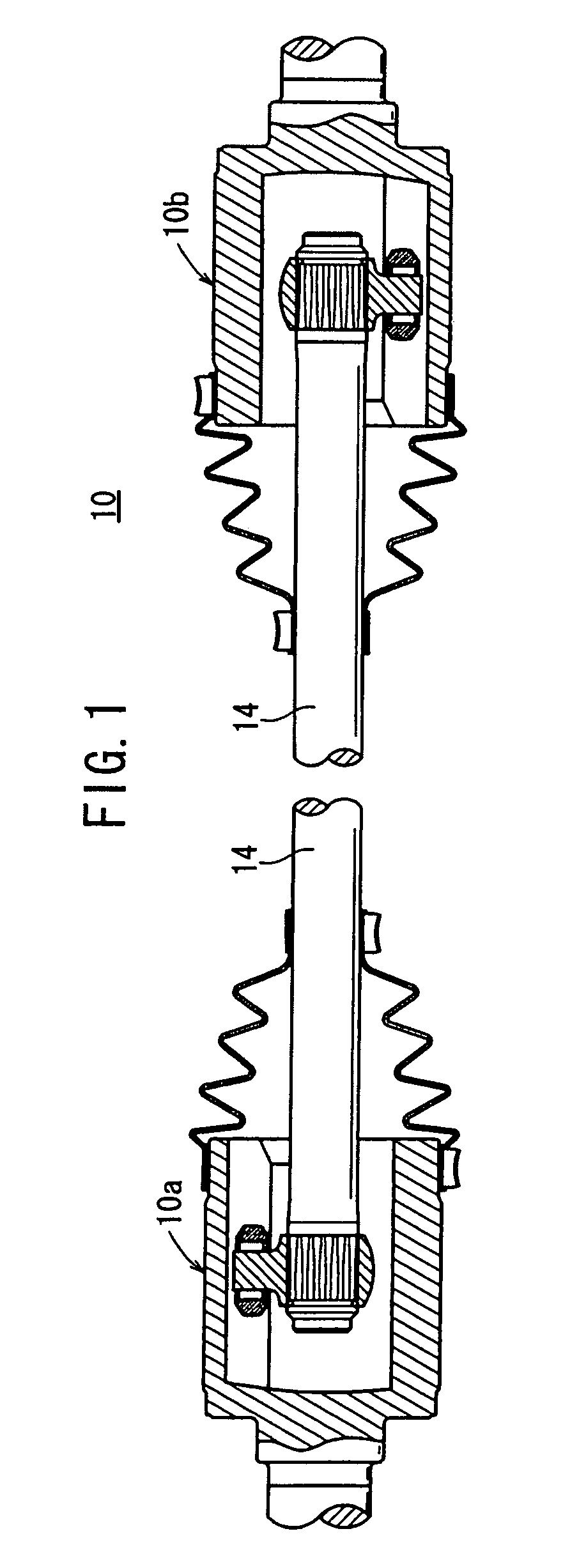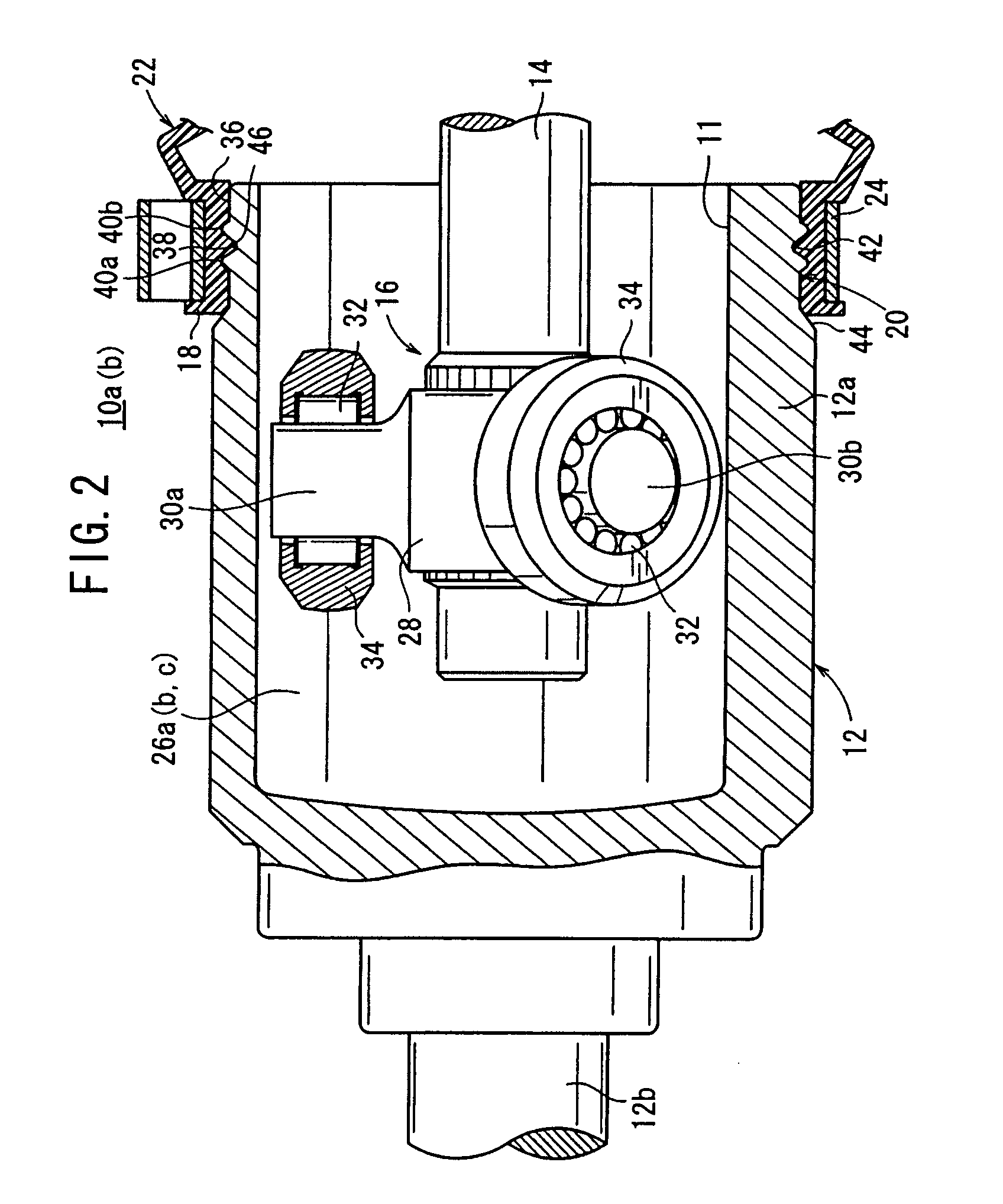Rotation Drive Force Transmission Mechanism, Constant Velocity Universal Joint and Resin Joint Boot Constructing the Mechanism, and Method of Tightening Clamp Band for Constant Velocity Universal Joint
a transmission mechanism and constant velocity technology, applied in mechanical devices, manufacturing tools, couplings, etc., can solve the problems of reducing the sealing function of the joint boot, increasing surface pressure, and reducing the shock applied, so as to reduce the amount of shock applied, reduce the deformation stress acting on the bellows, and the effect of reducing the thickness
- Summary
- Abstract
- Description
- Claims
- Application Information
AI Technical Summary
Benefits of technology
Problems solved by technology
Method used
Image
Examples
Embodiment Construction
[0080]A rotation drive force transmission mechanism, a constant-velocity joint and a resin-made joint boot therefor, together with a method of crimping a fastening band according to embodiments of the present invention, shall be described below with reference to the accompanying drawings. The rotation drive force transmission mechanism is typically incorporated in a motor vehicle such as an automobile or the like.
[0081]FIG. 1 is a longitudinal cross-sectional view, taken in an axial direction, of a rotation drive force transmission mechanism 10 according to an embodiment of the present invention. As shown in FIG. 1, the rotation drive force transmission mechanism 10 comprises a shaft 14, a first tripod constant-velocity joint 10a coupled to an end of the shaft 14 for axial sliding movement thereon, and a second tripod constant-velocity joint 10b coupled to the other end of the shaft 14 for axial sliding movement thereon. The first and second tripod constant-velocity joints 10a, 10b ...
PUM
| Property | Measurement | Unit |
|---|---|---|
| diameter | aaaaa | aaaaa |
| rotational drive force | aaaaa | aaaaa |
| velocity | aaaaa | aaaaa |
Abstract
Description
Claims
Application Information
 Login to View More
Login to View More - R&D
- Intellectual Property
- Life Sciences
- Materials
- Tech Scout
- Unparalleled Data Quality
- Higher Quality Content
- 60% Fewer Hallucinations
Browse by: Latest US Patents, China's latest patents, Technical Efficacy Thesaurus, Application Domain, Technology Topic, Popular Technical Reports.
© 2025 PatSnap. All rights reserved.Legal|Privacy policy|Modern Slavery Act Transparency Statement|Sitemap|About US| Contact US: help@patsnap.com



